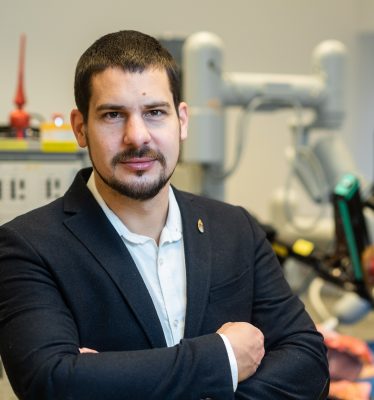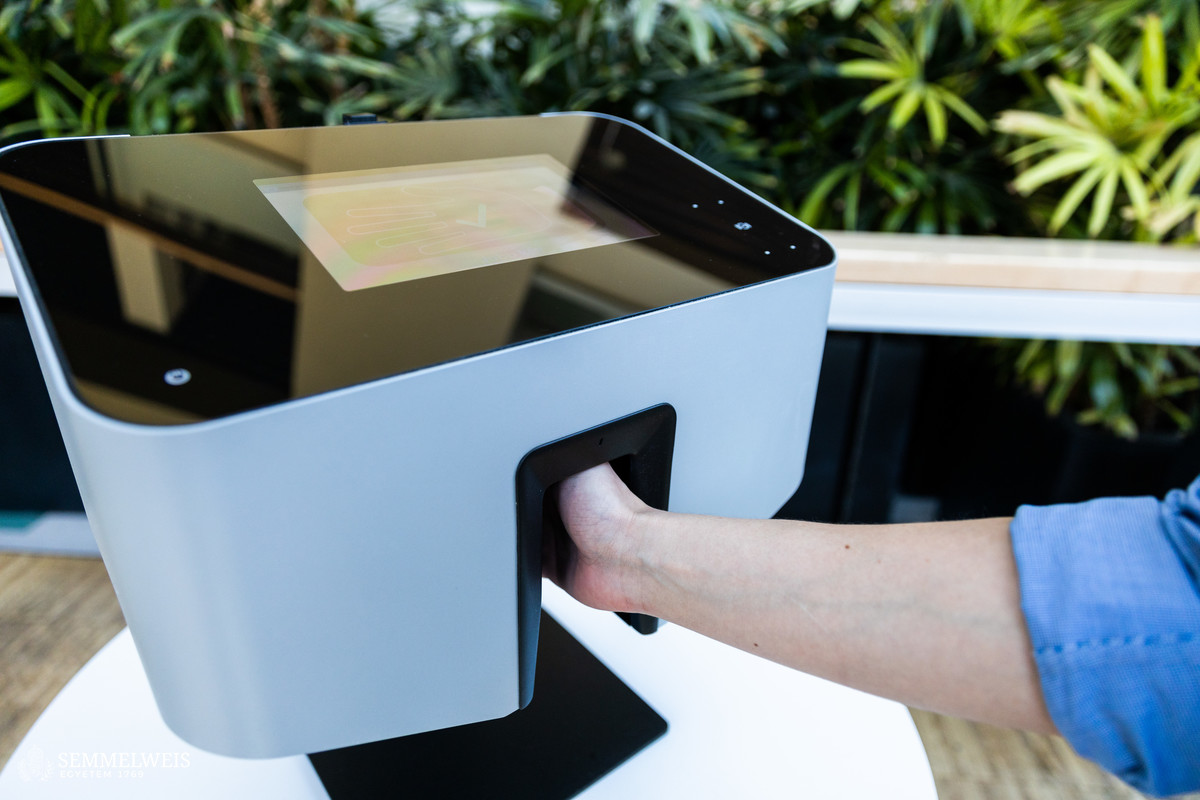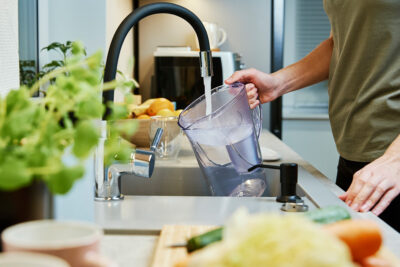The fingertips and the back of the hand are the most neglected parts when disinfecting, according to experts from Semmelweis University and Óbuda University in Budapest, Hungary. Their joint translational research was recently published in the journal Antimicrobial Resistance & Infection Control.
340 medical students were randomly selected to receive 1.5 or 3 ml of alcohol-based handrubs (ABHR) with the same composition as commercially available ones. They used these amounts twice – first in a liquid then in a gel-based form. The ABHR also contained a fluorescent dye, invisible to the naked eye. The experts analysed the effectiveness of hand disinfection with the help of a fully automated digital scanner (Semmelweis System by HandInScan) used in training and research both at Semmelweis University and Óbuda University.
1.5 ml hand sanitiser proved insufficient in either format to completely cover the hand.
The gel, on average, left 7% of the hands untreated. The liquid agent left 5.8% uncovered, which is already a significant shortcoming regarding patient safety in a clinical setting,” said Dr. Constantinos Voniatis, resident surgeon at the Department of Surgery, Transplantation and Gastroenterology of Semmelweis University.
In contrast, the 3 ml amount worked well for both gel and liquid handrubs as the uncovered area remained below 1.5%. Most often, the fingertips and the back of the dominant hand were left out while disinfecting. When asked, participants also typically misjudged the amount needed for effective hand sanitising.
 “Current WHO guidelines are not specific enough, and only state that people should use a “palmful” amount of hand sanitiser and rub in for 20-30 seconds. The recommendations need to be more definitive and evidence-based. During the latest pandemic, hand hygiene came to the spotlight, and our research proves that prior standards need an update. Work and negotiations have already begun at an international level. The results should be useful for anyone with a hygiene awareness, not only in healthcare organisations,” explains Dr. Tamás Haidegger, Director General of Óbuda University’s Research and Innovation Centre and member of WHO’s Private Organizations for Patient Safety (POPS) working group.
“Current WHO guidelines are not specific enough, and only state that people should use a “palmful” amount of hand sanitiser and rub in for 20-30 seconds. The recommendations need to be more definitive and evidence-based. During the latest pandemic, hand hygiene came to the spotlight, and our research proves that prior standards need an update. Work and negotiations have already begun at an international level. The results should be useful for anyone with a hygiene awareness, not only in healthcare organisations,” explains Dr. Tamás Haidegger, Director General of Óbuda University’s Research and Innovation Centre and member of WHO’s Private Organizations for Patient Safety (POPS) working group.
The WHO recommends using either gel hand sanitiser containing at least 70% alcohol or a liquid one with 80% ethanol or 75% isopropyl and rubbing it for 20-30 seconds.
Other aspects should also be considered, the researchers warn. For example, the liquid hand sanitiser was better distributed in a smaller amount (1.5 ml), but with the larger amount (3 ml), the spillage was significantly more than with the gel.
 “Hand size is also critical in choosing the right amount. Results are conclusive and 1.5 ml is not enough, even for smaller hands. For an average hand size 3 ml is typically sufficient, but larger hands might require even more. However, 3 ml may feel too much for a smaller hand and could lead to some waste of the product. The study showed that with 3 ml, the average rubbing time was 40-42 seconds, which was reported to be too long in the daily clinical practice. Even when using 1.5 ml, the time comes to 30-32 seconds, slightly exceeding the WHO recommended rubbing time. A personalised, hand-size-based application volume would resolve all issues,” explains Dr. Constantinos Voniatis.
“Hand size is also critical in choosing the right amount. Results are conclusive and 1.5 ml is not enough, even for smaller hands. For an average hand size 3 ml is typically sufficient, but larger hands might require even more. However, 3 ml may feel too much for a smaller hand and could lead to some waste of the product. The study showed that with 3 ml, the average rubbing time was 40-42 seconds, which was reported to be too long in the daily clinical practice. Even when using 1.5 ml, the time comes to 30-32 seconds, slightly exceeding the WHO recommended rubbing time. A personalised, hand-size-based application volume would resolve all issues,” explains Dr. Constantinos Voniatis.
According to the WHO, seven out of a hundred patients in acute care contract a healthcare-associated infection in economically developed countries. The number can be as high as 15 in less developed regions.
“Statistics show that approximately 40% of hospital-acquired infections results from direct contact, mainly due to inadequate hand hygiene, and roughly 10% are fatal.
Every year, hundreds of thousands of patients lose their lives worldwide, even though, detailed and evidence-based regulations and their strict audit could prevent these unnecessary deaths,”
adds Dr. Tamás Haidegger.
The Hungarian researchers are also members of the ISO (International Organization for Standardization) technical committee TC304 that develops hand hygiene standards for healthcare institutions. Due to their work, the international working group plans to publish the world’s first hand hygiene standard (ISO 23447) this year. According to Dr. Voniatis, Head of the ISO committee, the new standard will support the development of modern hospital hand hygiene programs, considering theoretical and practical aspects.
The Semmelweis Hand Hygiene System is an award-winning, AI-based hand-scanner by HandInScan and Óbuda University. It provides personalised feedback to the user about the effectiveness of their hand disinfection. The technology is named after the 19th-century physician, Ignác Semmelweis, commonly called the “saviour of mothers” because of his pioneering work regarding the routine application of hand hygiene. There are 12 such hand scanner devices across the clinics of Semmelweis University used by students and staff members daily to ensure and promote high-quality hand hygiene. The Semmelweis System is now also used in 25 countries and over a hundred hospitals worldwide.
Photo: Balint Barta, Attila Kovacs – Semmelweis University; Tamas Haidegger – Óbuda University



